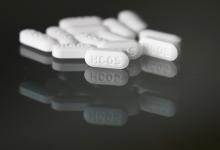Biosimilar Reports - January 2016 Save

Biosimilars are the fastest developing product line within the pharmaceutical industry. There is unanimous worldwide interest in the continued use of biologics for immune mediated disorders. The opportunity to substantially reduce the cost of biologics through the use of biosimilars poses a significant advantage to patients, practitioners and governments internationally.
The development of biosimilars has progressed significantly under the guidance of regulatory agencies in the European Union, Canada and the United States. Biosimilars will be a world-wide phenomenon, with ripple effects to be felt by many. Major concerns in this arena center around several key issues - pricing, regulation, interchangibility, extrapolation, competition and safety.
RheumNow will periodically provide “Biosimilar Reports” as a compilation of updates, news, new publications, overview articles and research results germane to biosimilar pharmaceuticals. Most of these are compiled from print sources and some are from video or podcasts.
News
1. Update on Biosimilars. December 2015. VIDEO by Dr. Jon Kay from University of Massachusetts Medical reports from the 2015 ACR meeting. He presents the latest in biosimilar research presented at the meeting. Specifically he discusses the SB4 etanercept biosimilar and Amgen’s ABP 501 adalimumab biosimilar results. http://buff.ly/1S0enBJ
2. Samsung Bioepis' RENFLEXIS® Infliximab Biosimilar Receives Regulatory Approval in Korea. December 4, 2015. Business wire reports that Korea's Ministry of Food and Drug Safety approved a biosimilar version of Remicade® (infliximab), also known as SB2 – for the treatment of rheumatoid arthritis, ankylosing spondylitis, Crohn’s disease, pediatric Crohn’s disease, ulcerative colitis, pediatric ulcerative colitis, psoriatic arthritis and plaque psoriasis. This marks the second regulatory approval for Samsung Bioepis in Korea. The MFDS approved in September 2015 Samsung Bioepis’ BRENZYS®, a biosimilar version of Enbrel® (etanercept), also known as SB4. http://buff.ly/1QqcGLV
3. Amgen Files ABP 501 with EMA and FDA. December 3, 2015. Amgen's First Biosimilar Marketing Authorization Application Submitted to European Medicines Agency for ABP 501 (biosimilar of adalimumab). Amgen believes this submission is the first adalimumab biosimilar application submitted to the EMA and represents Amgen's first biosimilar to be submitted for approval in the European Union. ABP 501 has been studied in phase III trials in patients with RA and psoriasis (http://buff.ly/1QqfZD2). On November 25th, Amgen filed its’ BLA for ABP 501 with the FDA (http://buff.ly/1OIJtcH).
4. Biologics and Biosimilars Bits and Bytes. December 10, 2015. The Bricwall Blog reports on Coherus Biosciences filing two new petitions challenging Abbvie’s patent for Humira. http://buff.ly/1S0iNbH
5. Coherus and Baxalta today announced their CHS-0214 etanercept biosimilar meets its first primary endpoint in a randomized, controlled, two-part clinical study. January 11, 2016. This ongoing study is evaluating the efficacy and safety of CHS-0214 compared to Enbrel in patients with moderate-to-severe rheumatoid arthritis that is inadequately controlled with methotrexate alone. The study continues as planned until week 52. http://buff.ly/1S0onee
6. Novartis Press Release: Sandoz files Enbrel biosimilar in the EU. December 8, 2015. Novartis announced that the EMA has accepted its application for approval of its biosimilar (GP2015) etanercept with data from 2 pivotal clinical trials, for all indications in the etanercept label, including rheumatoid arthritis and psoriasis. http://buff.ly/1SCvSYr
7. New Jersey Governor Signs Biosimilar Substitution Bill. November 11, 2015. Governor Chris Christie signed legislation that allows pharmacists to substitute biosimilars for biologic drugs. http://buff.ly/1QuhPCP
Journal Reports
8. Comparable long-term efficacy CT-P13 and reference infliximab in patients with ankylosing spondylitis: the PLANETAS study. Park W, et al. Arthritis Research & Therapy 2016, 18:25. CT-P13 (Remsima®, Inflectra®) the biosimilar was compared to is reference product (infliximab) in this 250 patient head-to-head blinded study. After 52 weeks, comparable outcome in BASDAI, BASFi, SF-36 and PK studies. Adverse events were also similar, occurring in 19.5% and 23.0% of patients receiving CT-P13 and RP, respectively. http://buff.ly/1ODqz72
9. SB5 – an adalimumab biosimilar presented at the 2015 ACR meeting. Weinblatt ME, et al. December 29, 2015. SB5, a Samsung Bioepis, biosimilar showed similar efficacy and safety when compared to the originator adalimumab, according to the results of a phase 3 trial that included 544 RA patients, presented in San Francisco at the 2015 ACR Annual meeting. At week 24, comparable ACR20 responses (72.5% vs. 72%) and ACR70 responses (19.2% vs. 20.3%) were seen. At week 24, anti-drug antibodies were present in 32.8% of patients who received SB5 and in 31.7% of patients in the originator group. http://buff.ly/1QqlyRY
Reviews & Overviews
10. Clinical Data and Regulatory Issues of Biosimilar Products. Stevenson JG. Am J Manag Care. 2015;21:S320-S330. This review covers basic definitions, concepts, regulatory and guidance issues. “Biologics encompass a range of compounds, including recombinant hormones, growth factors, monoclonal antibodies, recombinant vaccines, and blood products. Many of these drugs are facing patent expiration, and pharmaceutical research is focusing on the development of generic substitutes, or “biosimilars.” Because biologics generally exhibit high molecular complexity, the process of development and approval of biosimilars is complicated.” http://buff.ly/1QqbJmM
11. Drs. Jon Kay & Vibeke Strand - Update on Biosimilars from the Cleveland Clinic 2015 Biologics Summit. (http://buff.ly/1ODrTXG) Highlights from these addresses include:
- Zarxio is the first US biosimilar (Neuopogen) to be FDA approved (6 March 2015)
- Biosimilars must be similar to the reference medicine product in terms of quality, biologic activity, safety and efficacy based on comprehensive study (EMA definition). The FDA definition uses the words safety, purity, and potency to define the equivalence of the biosimilar product.
- There are other variant compounds that seem similar, but do not meet the standards of biosimilars. This includes “Biomimics” – which are replica compounds, but are not same as biosimilars and do not meet the standards as set by the EMA or FDA. “2nd generation biopharmaceuticals” are developed by pharma as structurally and potentially, functionally different compounds with a potential therapeutic advantage. “Generics” small molecules that have identical chemical structure to the reference product.
- Biosimilar development has become a global activity that will substantially change therapeutics worldwide.
- Remicade has two biosimilars (Remsima and Inflectra): September 2013 the EMA approved the use of Inflectra and is being using in numerous countries in the EU. Remsima is now approved by the EMA and Health Canada.
- EMA guidelines on biosimilars have been in existence since 2011. The FDA is still in draft guidance mode since 2012. Hence the FDA has yet to publish a final guidance document for biosimilars. (Editors update: since this was written in the spring of 2015, the FDA has issued several new guidance documents now in final form. These include 3 final guidance documents on biosimilarity, quality and FDA-sponsor meetings and a several other biosimilar guidance documents in draft form - http://buff.ly/1K6Gig7. The FDA has also announced 2016 plans for additional guidance documents on biosimilar naming, interchangeability and statistical approaches to data analysis - http://buff.ly/1KzSiSl)
12. Biosimilars: Unanswered Questions. August 7, 2015. VIDEO by Dr. Stephen Paget from the Hospital for Special Surgery in NYC discusses some of his concerns and questions on biosimilar use in the future. http://buff.ly/1ZIbZym
13. Biosimilar Trends in 2016. January 6, 2016. Dr. Charu Manaktala, a Senior Medical Director and Strategist at Quintiles Asia writes a concise and insightful review of many pivotal areas in biosimilar development. She writes that “biologics with patents expiring between 2015 and 2020 constitute the second wave of biosimilars. These include biosimilars of top-selling products such as Humira, Enbrel, Rituxan/ MabThera, Avastin, Herceptin and Remicade. One infliximab biosimilar (Celltrion/ Hospira) is already approved and marketed in the European Union, and one etanercept biosimilar (Samsung) has very recently received positive opinion from the EMA’s Committee for medicinal products for human use.” There are “more than 160 biosimilars reported in different stages of development for the six top selling biologics.” She also writes about the Remsima experience and pricing in Norway, naming of biosimilars and other regulatory issues. “The US Food and Drug Administration (US FDA) released its first set of draft guidelines in 2012, which have since been finalized. Additional guidelines were released in 2014-15, and others are in the pipeline. US FDA guidelines in the pipeline are expected to cover interchangeability, statistical approaches to evaluation of analytical similarity, and labelling of biosimilars.” Recently, the FDA has issued a draft guidance on non-proprietary naming of biosimilars. The FDA recommends that all biosimilars have non-proprietary names, but also a four-letter suffix to distinguish them from the reference product. The suffix would consist of four lower case letters and not carry any meaning. http://buff.ly/1QqkjSL
14. Biosimilars in Gastroenterology. December 11, 2015. VIDEO by Dr. David Rubin (Univ. of Chicago). Dr. Rubin gives a video overview of his lecture on biosimilars delivered at the Advances in IBD meeting in Orlando, FL. He discusses several issues including interchangeability, cost, immunogenicity and extrapolation, including the FDA rules for biosimilar extrapolation. Currently, a biosimilar may gain regulatory approval with studies in one disease only but receive extrapolated approval for multiple indications (e.g., psoriasis, IBD, JIA, etc.).
Regulatory & Governmental Issues
15. FDA to discuss FDA Celltrion's infliximab biosimilar BLA. On Feb. 9, 2016 the FDA Arthritis Advisory Committee will meet to review CT-P13. Celltrion is seeking approval of CT-P13 to treat all the indications for which Remicade is approved, including Crohn's disease, ulcerative colitis, rheumatoid arthritis, ankylosing spondylitis, psoriasis and psoriatic arthritis. http://buff.ly/1ODsBUJ
16. Mylan Collaborates with Momenta to develop an abatacept biosimilar. Mylan's collaboration with Momenta builds upon Mylan's existing biologics and insulin analog partnership with Biocon. The Biocon partnership includes six biosimilar programs (trastuzumab, pegfilgrastim, adalimumab, bevacizumab, etanercept, and filgrastim) and three insulin analogs (glargine, lispro, and aspart). Five of these biosimilar programs have successfully completed Phase I clinical trials, and four of the programs are in active Phase III testing. http://buff.ly/1KvAec7 http://buff.ly/1ODtkW6
17. Abbvie Petitions FDA to Examine Interchangeability Issue. December 2015. AbbVie issued a citizen petition asking the FDA to examine whether there is sufficient scientific evidence to support that a biosimilar applicant is interchangeable with a reference product (e.g., adalimumab). http://buff.ly/1SCHkTP
18. Zarxio is the first biosimilar approved in the United States. Novartis’ Zarxio biosimilar of filgrastim (Neupogen) was FDA approved in March 2015 under the 315(k) pathway. http://buff.ly/1ODt49q










If you are a health practitioner, you may Login/Register to comment.
Due to the nature of these comment forums, only health practitioners are allowed to comment at this time.